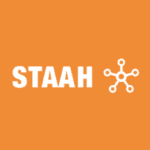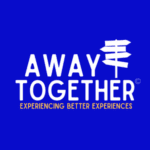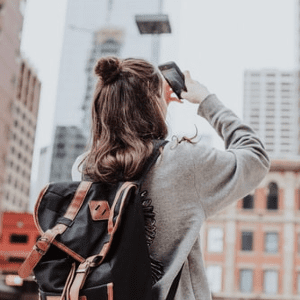 Over much of the last decade, OTAs (online travel agencies) have become the most common way that people book hotels. These companies streamlined the booking process and added convenient features (such as easy price comparison) at a time when most hotels lacked an effective digital presence. As the OTAs’ share of bookings grew, they were able to charge higher commissions, meaning less revenue for the hotels themselves. In response, many hoteliers took a stance to win business back and reclaim direct bookings.
Over much of the last decade, OTAs (online travel agencies) have become the most common way that people book hotels. These companies streamlined the booking process and added convenient features (such as easy price comparison) at a time when most hotels lacked an effective digital presence. As the OTAs’ share of bookings grew, they were able to charge higher commissions, meaning less revenue for the hotels themselves. In response, many hoteliers took a stance to win business back and reclaim direct bookings.
However, the COVID-19 pandemic prompted a huge shake-up in the travel industry. While travel came to a halt around the world, OTAs were forced to significantly cut their marketing budgets. The giant budgets of these companies are what enabled them to dominate the industry in the first place. With less competition, hoteliers had an opportunity to reclaim a larger share of direct bookings. By February 2021, direct channel was the clear winner, generating 35% more nights booked than second-place Booking.com.
There were other factors during the pandemic that favored hoteliers. Guests became much more concerned with safety, so they went to the source — the hotel website — for guarantees about health practices. Hotels were also able to provide personalized customer service and flexible cancellation plans that OTAs could not compete with. Lastly, while international travel was not possible, local travel took center stage. This is an area where direct bookings have always been more common, due to no language barriers and guests’ familiarity with the area.
While direct bookings increased over the past year, the industry will continue to change as travel demand returns. Hoteliers have had time to improve their technology and develop their direct-booking strategies, but OTAs are sure to dedicate record amounts of money in order to reclaim their business. This is an important moment for the industry, where the changes that happen now can determine the trends of the next decade. If hoteliers are properly prepared, they can look forward to a more promising — and profitable — future.
How OTAs can help
While OTAs are often seen by hoteliers as the “bad guy,” they can actually be a valuable resource. Like it or not, these websites have already cemented themselves as part of the travel-planning journey. Even if a user intends to book directly on a hotel website, they might still use an OTA (or more than one) to see reviews and traveler photos, compare prices, and explore area attractions. Instead of shunning these platforms, hoteliers should look to build the right balance with their distribution strategy. After all, a conversion path that starts on an OTA doesn’t need to end there.
If potential guests are going to be on OTAs anyway, then hoteliers need to be there also. Hoteliers should inspect their property listings often, making sure photos and descriptions are up to date and responding to reviews — both positive and negative. Not only does this give hoteliers a better understanding of what guests like and dislike about their property, but responding to reviews on OTAs shows that the hotel cares about what guests think and is actively trying to address any issues experienced by their guests.
Windows of opportunity
For most travelers, research spans about two weeks, with users planning flights, browsing OTAs, and researching the destination. That means hoteliers have a window in which to reach the user and call out the benefits of booking direct. Not only can hoteliers run display advertising directly on the OTAs themselves, but they can use data sourced by the OTAs to build look-alike audiences. This allows hoteliers to find future bookers on OTAs and guide them toward booking direct on the hotel website.
Finally, if a user does end up booking through an OTA, it’s not the end of the story. If the guest has a positive experience on the property, the likelihood they will return increases considerably. Once a hotel receives a booking via an OTA, they need to obtain the guest’s email address and nurture that relationship before, during, and after the stay in order to maximize that guest’s RFM (recency, frequency, monetary) value. A good CRM strategy will ensure that all future bookings are made direct.
Optimize for direct bookings
If hoteliers want guests to book directly through the hotel website, then the website needs to be optimized for guests to do so. That means an intuitive interface, seamless technology, and appealing visual design on both mobile and desktop. A strong hotel website has all the information a guest needs in order to feel confident booking a stay, and that information must be easy to find without requiring too many clicks. If a user experiences any difficulty navigating the website or using the booking engine, they will simply open a new tab and go to an OTA, where they know they’ll find a reliable, consistent experience.
A good website can’t help though unless users can find it. As SEM (search-engine marketing) becomes more competitive, consumers must scroll halfway down the page to see organic results. Ads take up the first half of the page, and OTAs actively bid on hotel brand terms. Hoteliers should maximize their paid-search brand-impression share to sit at 90 percent or higher. They need to bid on their key terms, especially exact match, so that their ads show up first. The hotel’s money goes further than the OTAs’ for these keywords, and they’re aided by the Google quality score, which recognizes that this is the website users are looking for.
Once a hotelier invests in their hotel website, they need to make sure users actually see it. That’s where SEO (search-engine optimization) and SEM (search-engine marketing) come in. OTAs actively bid on brand terms, so even if a user searches for a hotel by name, they may need to scroll halfway down the page to find the official hotel website. To counter this, hotels need to bid on their key terms, especially exact match, so that their ads show up first. Hoteliers should maximize their paid-search brand-impression share to sit at 90 percent or higher. This should ensure that the hotel website is easy to find on search engines.
Give them a reason to book direct
Ultimately, if hoteliers want guests to book direct, they need to provide a reason. There are many ways hoteliers can add value in order to make booking direct more appealing. The easiest way is to offer perks, discounts, or special rates. Hoteliers can advertise a “best-rate guarantee,” which instills confidence that there aren’t any lower prices available online. They can also create exclusive offers only available through the hotel website.
Another powerful tool to encourage direct bookings is a loyalty program. Similar to the best-rate guarantee, this is a concept that online shoppers are very familiar with, so clear messaging with the promise of discounts or extra perks can be very effective. Not only does a loyalty program ensure that bookings will be made directly through the hotel website, but it encourages repeat bookings in the future.
Hotels are also able to offer flexibility that OTAs cannot match. Many consumers lost faith in OTAs during the pandemic, when rigid cancellation policies left users feeling frustrated. Hoteliers should make sure to highlight flexible bookings and cancellations on the website and in their advertising. Sometimes this is all that’s needed in order to secure the booking.
Conclusion
The recent rise in direct bookings was an unexpected boon for hoteliers, and it might be a sign of the direction the industry is heading. Hoteliers now need to do everything they can to hold on to this advantage and not let OTAs regain that share of the market. Thankfully, the ball is in the hoteliers’ court, with helpful technology and an increased awareness among consumers of the benefits of booking direct. With an effective website, a good SEM plan, and the right messaging, hoteliers are well-equipped to win the race for direct bookings.















